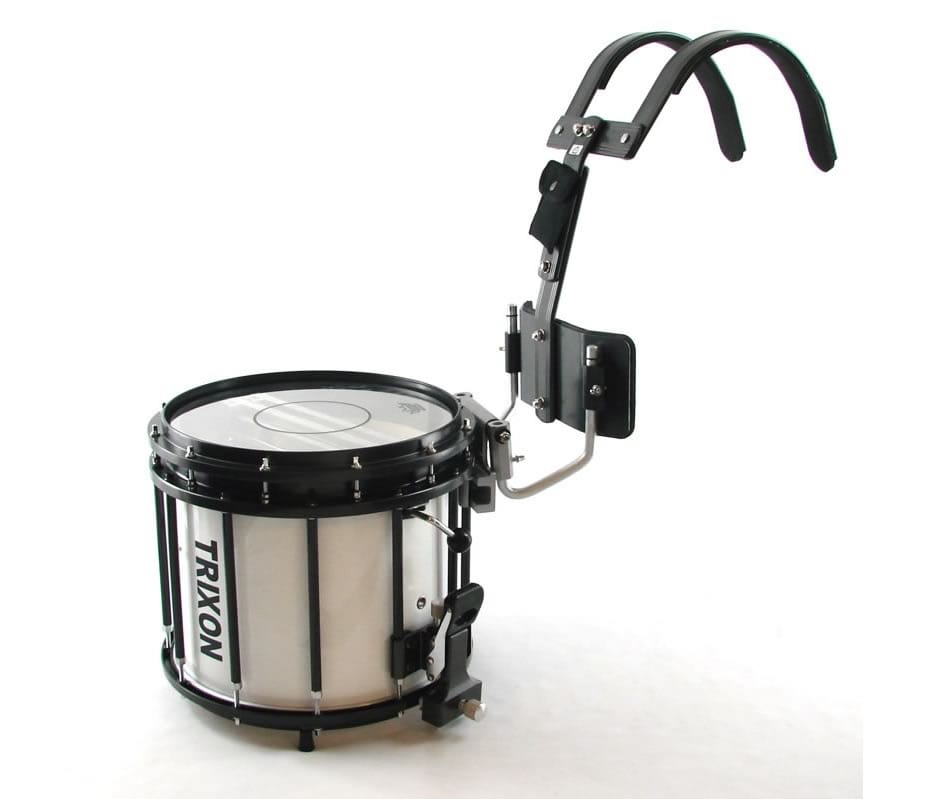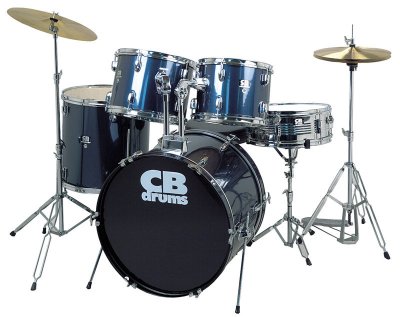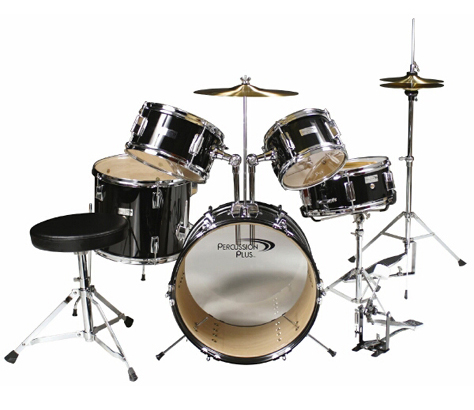 The drum is a known person in the percussion group of musical devices. Inside the Hornbostel-Sachs classification system, it is just a membranophone.[1] Drums consist of at least one membrane, called a drumhead or drum skin area, that is stretched over the shell and struck, either immediately with the player's hands, or with a drum stay, to produce sound. There is generally a resonance at once the underside of the drum, tuned to a just a little lower pitch than the most notable drumhead typically. Other techniques have been used to cause drums to make sound, including the thumb roll. Drums will be the world's oldest and most ubiquitous musical devices, and the basic design has remained almost unchanged for thousands of years.[1]Drums may be played out singularly, with the participant using a solo drum, and some drums such as the djembe are almost always played in this way. Others are usually played in a couple of two or more, all played by the one player, such as bongo drums and timpani. A number of different drums with cymbals form the basic modern drum kit alongside one another.
The drum is a known person in the percussion group of musical devices. Inside the Hornbostel-Sachs classification system, it is just a membranophone.[1] Drums consist of at least one membrane, called a drumhead or drum skin area, that is stretched over the shell and struck, either immediately with the player's hands, or with a drum stay, to produce sound. There is generally a resonance at once the underside of the drum, tuned to a just a little lower pitch than the most notable drumhead typically. Other techniques have been used to cause drums to make sound, including the thumb roll. Drums will be the world's oldest and most ubiquitous musical devices, and the basic design has remained almost unchanged for thousands of years.[1]Drums may be played out singularly, with the participant using a solo drum, and some drums such as the djembe are almost always played in this way. Others are usually played in a couple of two or more, all played by the one player, such as bongo drums and timpani. A number of different drums with cymbals form the basic modern drum kit alongside one another.Field Series Marching Snare Drum Trixon Drums – Acoustic Drums
 Drums are usually played out by dazzling with the side, or with one or two sticks. In many traditional cultures, drums have a symbolic function and are being used in spiritual ceremonies. Drums are often used in music therapy, hand drums especially, for their tactile nature and easy use by a wide variety of people.[2]In popular music and jazz, "drums" usually identifies a drum package or a set of drums (with some cymbals), and "drummer" to the individual who plays them.Drums acquired even divine status in places such as Burundi, where in fact the karyenda was symbolic of the billed electricity of the ruler.Construction[edit]Drum taken by John Unger, Company B, 40th Regiment NY Veteran Volunteer Infantry Mozart Regiment, 20 december, 1863The shell almost invariably has a round opening over which the drumhead is stretched, but the condition of the rest of the shell differs widely. In the western musical traditions, the most regular condition is a cylinder, although timpani, for example, use bowl-shaped shells.[1] Other designs include a frame design (tar, Bodhr?n), truncated cones (bongo drums, Ashiko), goblet molded (djembe), and became a member of truncated cones (discussing drum).Drums with cylindrical shells can most probably at one end (as is the truth with timbales), or can have two drum heads. Single-headed drums consist of a pores and skin extended over a specific space typically, or over one of the ends of your hollow vessel. Drums with two heads covering both ends of a cylindrical shell often have a small opening somewhat halfway between the two heads; the shell varieties a resonating chamber for the resulting sound. Exceptions are the African slit drum, also known as a log drum as it is made from a hollowed-out tree trunk, and the Caribbean metal drum, made from a material barrel. Drums with two mind can likewise have a set of wiring, called snares, organised across the lower part head, top brain, or both relative heads, hence the name snare drum.[1]
Drums are usually played out by dazzling with the side, or with one or two sticks. In many traditional cultures, drums have a symbolic function and are being used in spiritual ceremonies. Drums are often used in music therapy, hand drums especially, for their tactile nature and easy use by a wide variety of people.[2]In popular music and jazz, "drums" usually identifies a drum package or a set of drums (with some cymbals), and "drummer" to the individual who plays them.Drums acquired even divine status in places such as Burundi, where in fact the karyenda was symbolic of the billed electricity of the ruler.Construction[edit]Drum taken by John Unger, Company B, 40th Regiment NY Veteran Volunteer Infantry Mozart Regiment, 20 december, 1863The shell almost invariably has a round opening over which the drumhead is stretched, but the condition of the rest of the shell differs widely. In the western musical traditions, the most regular condition is a cylinder, although timpani, for example, use bowl-shaped shells.[1] Other designs include a frame design (tar, Bodhr?n), truncated cones (bongo drums, Ashiko), goblet molded (djembe), and became a member of truncated cones (discussing drum).Drums with cylindrical shells can most probably at one end (as is the truth with timbales), or can have two drum heads. Single-headed drums consist of a pores and skin extended over a specific space typically, or over one of the ends of your hollow vessel. Drums with two heads covering both ends of a cylindrical shell often have a small opening somewhat halfway between the two heads; the shell varieties a resonating chamber for the resulting sound. Exceptions are the African slit drum, also known as a log drum as it is made from a hollowed-out tree trunk, and the Caribbean metal drum, made from a material barrel. Drums with two mind can likewise have a set of wiring, called snares, organised across the lower part head, top brain, or both relative heads, hence the name snare drum.[1]the percussion instruments a drum set usually consists of a bass drum
 On modern band and orchestral drums, the drumhead is located over the beginning of the drum, which in turn is organised onto the shell by a "counterhoop" (or "rim"), which is then placed by means of a number of tuning screws called "tension rods" that screw into lugs placed evenly throughout the circumference. The head's tension can be modified by loosening or tensing the rods. Many such drums have six to ten stress rods. The sound of the drum depends upon many variables--including condition, shell thickness and size, shell materials, counterhoop materials, drumhead material, drumhead stress, drum position, location, and stunning position and speed.[1]
On modern band and orchestral drums, the drumhead is located over the beginning of the drum, which in turn is organised onto the shell by a "counterhoop" (or "rim"), which is then placed by means of a number of tuning screws called "tension rods" that screw into lugs placed evenly throughout the circumference. The head's tension can be modified by loosening or tensing the rods. Many such drums have six to ten stress rods. The sound of the drum depends upon many variables--including condition, shell thickness and size, shell materials, counterhoop materials, drumhead material, drumhead stress, drum position, location, and stunning position and speed.[1]Cool Kids Drumsets and Percussion Plus Kids Drum Set
 Before the invention of pressure rods, drum skins were attached and tuned by rope systems--as on the Djembe--or pegs and ropes such as on Ewe Drums. Today these procedures are almost never used, though sometimes appear on regimental marching music group snare drums.[1] The head of the talking drum, for example, can be temporarily tightened by squeezing the ropes that hook up the top and bottom heads. Similarly, the tabla is tuned by hammering a disc held set up surrounding the drum by ropes stretching from the top to bottom head. Orchestral timpani can be tuned to precise pitches by utilizing a foot pedal quickly.Sound of your drum[edit]Several North american Indian-style drums for sale at the Country wide Museum of the American Indian.Several factors determine the sound a drum produces, including the type, shape and construction of the drum shell, the kind of drum heads it has, and the strain of these drumheads. Different drum looks have different uses in music. Take, for example, the present day Tom-tom drum. A jazz drummer may want drums that are high pitched, resonant and quiet whereas a rock and roll drummer may choose drums that are noisy, low-pitched and dry. Since these drummers want different sounds, their drums in different ways are made a little.The drum head gets the most effect how a drum noises. Each kind of drum brain serves its musical goal and has its unique audio. Double-ply drumheads dampen high regularity harmonics because they're heavier and they are suitable for heavy playing.[3] Drum minds with a white, textured layer about them muffle the overtones of the drum brain slightly, producing a less diverse pitch. Drum mind with central silver precious metal or dark dots have a tendency to muffle the overtones even more. And drum minds with perimeter sound rings generally eliminate overtones (Howie 2005). Some jazz drummers avoid using thick drum minds, preferring solo ply drum mind or drum heads without muffling
Before the invention of pressure rods, drum skins were attached and tuned by rope systems--as on the Djembe--or pegs and ropes such as on Ewe Drums. Today these procedures are almost never used, though sometimes appear on regimental marching music group snare drums.[1] The head of the talking drum, for example, can be temporarily tightened by squeezing the ropes that hook up the top and bottom heads. Similarly, the tabla is tuned by hammering a disc held set up surrounding the drum by ropes stretching from the top to bottom head. Orchestral timpani can be tuned to precise pitches by utilizing a foot pedal quickly.Sound of your drum[edit]Several North american Indian-style drums for sale at the Country wide Museum of the American Indian.Several factors determine the sound a drum produces, including the type, shape and construction of the drum shell, the kind of drum heads it has, and the strain of these drumheads. Different drum looks have different uses in music. Take, for example, the present day Tom-tom drum. A jazz drummer may want drums that are high pitched, resonant and quiet whereas a rock and roll drummer may choose drums that are noisy, low-pitched and dry. Since these drummers want different sounds, their drums in different ways are made a little.The drum head gets the most effect how a drum noises. Each kind of drum brain serves its musical goal and has its unique audio. Double-ply drumheads dampen high regularity harmonics because they're heavier and they are suitable for heavy playing.[3] Drum minds with a white, textured layer about them muffle the overtones of the drum brain slightly, producing a less diverse pitch. Drum mind with central silver precious metal or dark dots have a tendency to muffle the overtones even more. And drum minds with perimeter sound rings generally eliminate overtones (Howie 2005). Some jazz drummers avoid using thick drum minds, preferring solo ply drum mind or drum heads without mufflingthe percussion instruments a drum set usually consists of a bass drum
 The next biggest factor that impacts drum audio is head anxiety resistant to the shell. When the hoop is located around the drum shell and head and tightened down with tension rods, the tension of the top can be fine-tuned. When the tension is increased, the amplitude of the audio is reduced and the occurrence is increased, making the pitch higher and the volume lower.
The next biggest factor that impacts drum audio is head anxiety resistant to the shell. When the hoop is located around the drum shell and head and tightened down with tension rods, the tension of the top can be fine-tuned. When the tension is increased, the amplitude of the audio is reduced and the occurrence is increased, making the pitch higher and the volume lower.
{ 0 comments... Views All / Send Comment! }
Post a Comment